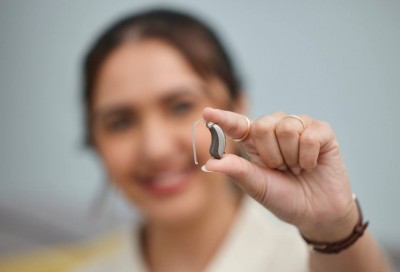TRT Austin Diagnosing, Monitoring, and Adjusting to The Treatment
Warning: Undefined variable $post in /home/dietofli/public_html/wp-content/plugins/code-snippets/php/snippet-ops.php(584) : eval()'d code on line 3
Warning: Attempt to read property "ID" on null in /home/dietofli/public_html/wp-content/plugins/code-snippets/php/snippet-ops.php(584) : eval()'d code on line 3
The estimated reading time is 6 minutes
Warning: Undefined variable $post in /home/dietofli/public_html/wp-content/plugins/oxygen/component-framework/components/classes/code-block.class.php(115) : eval()'d code on line 3
Warning: Attempt to read property "ID" on null in /home/dietofli/public_html/wp-content/plugins/oxygen/component-framework/components/classes/code-block.class.php(115) : eval()'d code on line 3

Testosterone replacement therapy (TRT) is a therapeutic approach that seeks to increase an individual's testosterone levels in order to help them address issues associated with low levels of the hormone, such as decreased energy and libido. In TRT, testosterone is usually administered through injections, patches, or gels to the affected person. It can also be taken orally in pill form. The goal of TRT is to restore healthy levels of testosterone, which can help improve physical and mental health, as well as the overall quality of life.
When considering TRT, it's essential for individuals to talk with a doctor about their individual needs and possible risks associated with the therapy. Possible side effects can include acne, hair loss, fluid retention, and sleep apnea. Some individuals may also experience increased aggression and irritability. It is essential to monitor testosterone levels closely during treatment in order to reduce the risk of any unpleasant side effects.
Regular exercise and a healthy diet are essential components of TRT Austin as they can help boost natural levels of testosterone and reduce fat, which can also increase the hormone's production. Additionally, reducing stress levels and getting adequate sleep is essential for optimal testosterone production, as these activities are associated with improved physical health and mental well-being.
Diagnosing Low Testosterone Levels Before TRT Austin
Blood tests to measure testosterone levels
Blood tests are one of the most common methods used to measure testosterone levels in order to determine whether or not an individual may be a candidate for TRT. These tests measure the amount of testosterone in a person's bloodstream, as well as other related hormones like luteinizing hormone, follicle-stimulating hormone, and estradiol. It is important to note that testosterone levels are constantly changing, so multiple tests over a period of time may be necessary in order to make an accurate diagnosis. (1)
Physical exam and medical history
In addition to blood testing, a physical exam and review of medical history can help determine if TRT is appropriate for an individual. A doctor may ask questions about an individual's lifestyle and sexual health in order to better understand their hormonal levels. They may also perform a physical exam to look for other signs of low testosterone, such as reduced muscle mass, decreased body hair, or changes in the testicles.
Other diagnostic tests to identify underlying conditions or causes of low testosterone
Additional diagnostic tests that may be used to identify underlying conditions or causes of low testosterone include hormone-stimulating tests like the human chorionic gonadotropin (HCG) stimulation test, clomiphene citrate challenge test (CCCT), and gonadotropin release hormone agonist suppression test. These tests measure the levels of hormones associated with testosterone production in order to determine if an individual has a medical condition that is causing low testosterone levels.
It is important to note that while TRT Austin can help improve symptoms of low testosterone, it should not be used as a treatment for any underlying medical conditions that may be causing the issue. Therefore, it's essential to talk with your trusted doctor at TRT Austin before starting TRT in order to determine the most appropriate treatment plan.
Monitoring and Adjusting to TRT Austin
Once someone has begun testosterone replacement therapy (TRT), it is important to monitor the effects of the treatment and adjust accordingly. After starting TRT, blood tests should be done regularly in order to ensure that the desired levels of testosterone are being achieved. Depending on an individual's response to the treatment, adjustments may need to be made in order to optimize the effectiveness of the therapy.
Additionally, it is important for individuals to talk with their doctor about any possible side effects that may occur as a result of TRT. Possible side effects can include acne, hair loss, fluid retention, and sleep apnea. It is essential to monitor testosterone levels closely during treatment in order to reduce the risk of any unpleasant side effects.
Regular monitoring of testosterone levels and symptoms
Monitoring testosterone levels and symptoms is important in order to ensure that the desired levels of testosterone are being achieved and to reduce the risk of experiencing any unpleasant side effects. After beginning TRT, regular blood tests should be conducted in order to measure testosterone levels over time. Additionally, monitoring for changes in physical health or mental well-being can help determine if further adjustments may need to be made in order to optimize the effectiveness of the treatment. Understanding how an individual's body is responding to TRT can help doctors make informed decisions about possible dosages or other treatments that may be necessary for successful results.
Adjusting dosages or changing treatment methods as needed
Adjusting dosages or changing treatment methods as needed is an essential part of testosterone replacement therapy (TRT) in order to ensure the desired levels of testosterone in the body are reached and maintained. If blood tests show that testosterone levels remain consistently low after initial treatment, doctors may increase the dosage or switch to an alternative method of delivery, such as injections or patches. It is important to closely monitor testosterone levels and any changes in physical or mental health throughout the course of treatment to ensure that the desired effects are achieved without any unpleasant side effects.
Potential long-term effects and risks of TRT
The long-term effects and risks of testosterone replacement therapy (TRT) are largely unknown due to the fact that it is a relatively new form of treatment. However, some potential risks include increased risk of heart attack or stroke, increased risk of prostate cancer, decreased fertility, and changes in mood or libido.
Testosterone replacement therapy can be a successful treatment for individuals who suffer from low testosterone levels and the associated symptoms. However, it is important to talk with a doctor before beginning TRT in order to determine if it is the most appropriate treatment plan. Additionally, regular monitoring of hormone levels and any changes in physical or mental well-being is essential for successful results without any unfavorable side effects.
By following these guidelines, individuals can feel confident in the safety and effectiveness of their testosterone replacement therapy treatment. (2)














